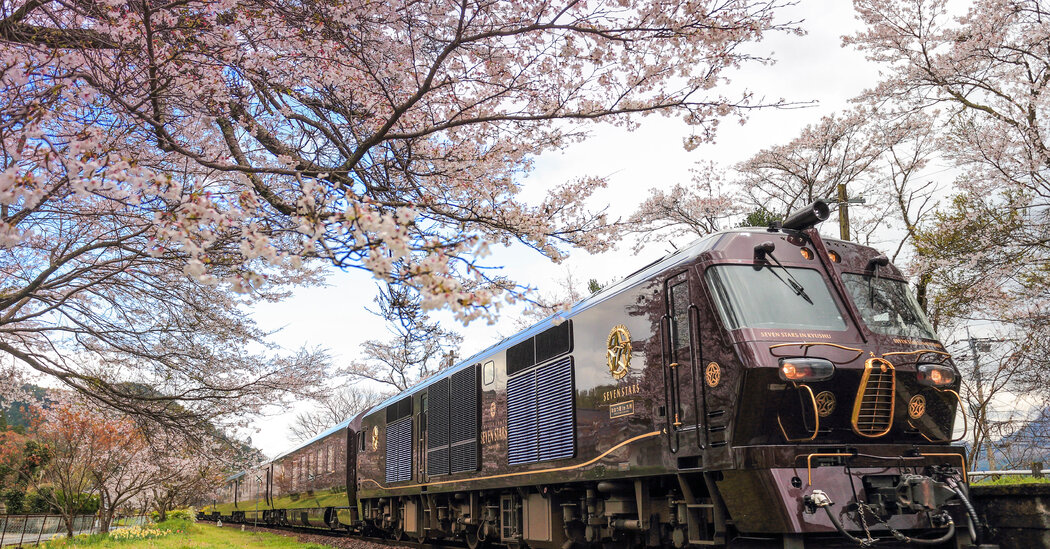Japan’s public transportation is known for its punctuality, efficiency and high-quality service, which means train travel is a great way to see the countryside and to experience Japanese culture — even if you’re squeezed into Tokyo’s crowded Yamanote line at rush hour or experiencing the popular high-speed Shinkansen bullet train.
But many savvy visitors crisscross the country in another way, using luxury trains that resemble five-star hotels on rails.
Luxury rail travel appeals to “someone who wants slow travel, the experience of excellent service in a contained environment, the finest dining, the most exquisite accommodation with private bathrooms,” Simon Pielow, co-founder of the Luxury Train Club, said by phone from Wiltshire County, England. “Things that many people have no idea is possible on anything other than a royal train.”
One trip chartered by his agency starts and ends at Hakata station in the city of Fukuoka, crossing the southern Japanese island of Kyushu on the Seven Stars, a seven-car luxury sleeper train. Journeys for either two days and one night (per person, double occupancy) range from 650,000 to 900,000 yen (about $4,292 to $5,942), or four days and three nights from ¥1.2 million to ¥1.6 million. (A single supplement would apply.)
“The train is very much sought-after because of the quality of the service on the train and its exclusivity,” Mr. Pielow said. “The people who come to us are desperate to travel on the train.”
With limited space, most would-be travelers need to apply several months in advance.
The Seven Stars, or Nanatsuboshi in Japanese, was named in part after the number of its carriages, in part after the seven prefectures of Kyushu: Fukuoka, Saga, Nagasaki, Kumamoto, Oita, Miyazaki and Kagoshima, and for seven of the main attractions of the region, including its nature, food and hot springs. (Other stars have been known to ride these rails: The actress and producer Margot Robbie told Vogue last year that she and her husband had traveled to Japan in part to ride the Seven Stars.)
The train consists of a lounge car, a bar, a tatami-mat tearoom and a souvenir shop, as well as eight 108-square-foot private rooms and two larger suites, the biggest measuring 226 square feet.
Guests don’t necessarily have to spend all their time on board. They can also get off to participate in activities such as a guided walk along the Wakimoto coast, a seaside area of Kagoshima Prefecture, that lasts about an hour.
Click Here to Read the Full Original Article at NYT > Travel…
